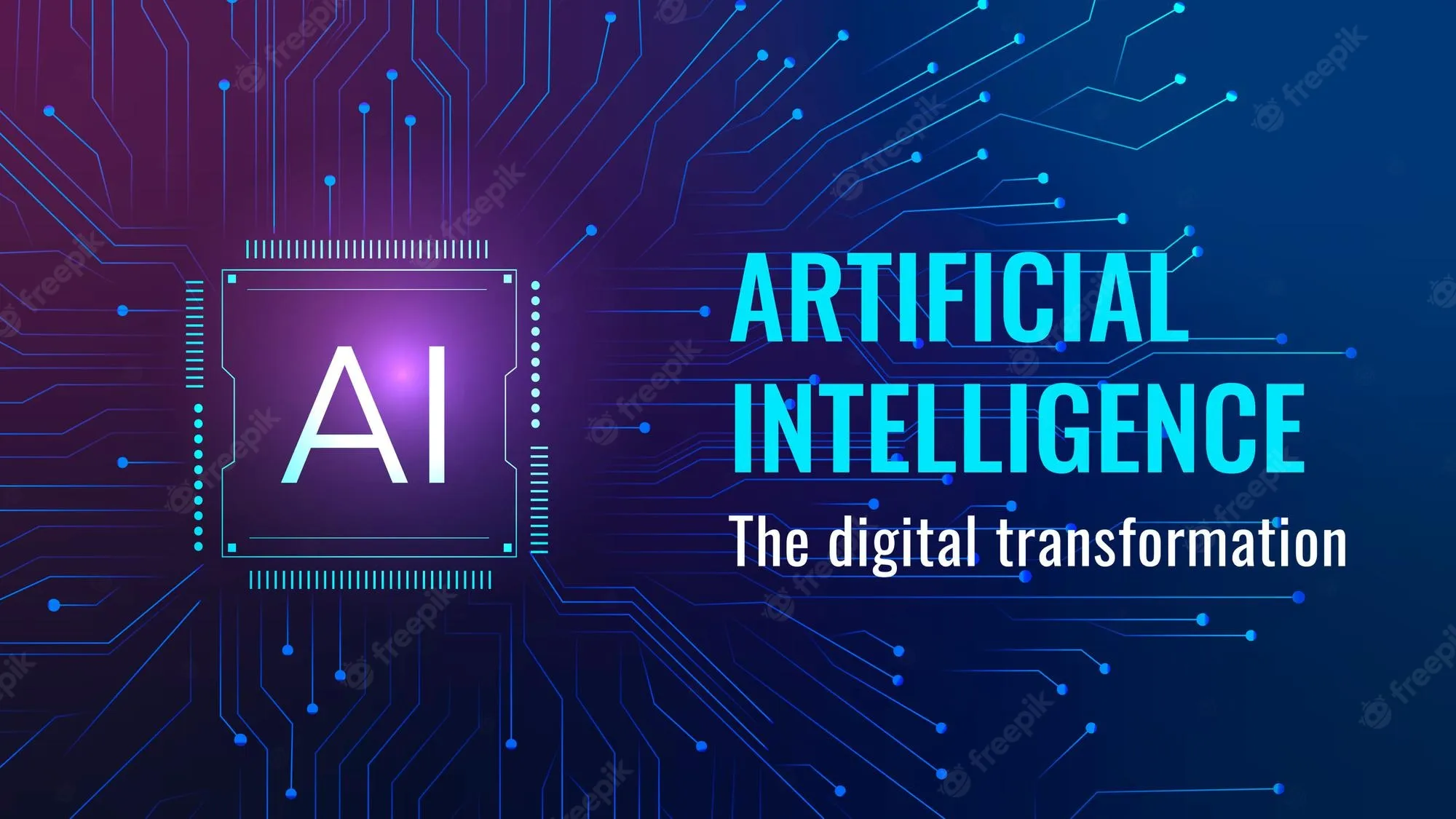
Secure. Compliant. Enterprise-Ready.
Implement robust cloud security frameworks aligned with global standards like HIPAA, SOC 2, and GDPR.
Welcome to Our IT Consulting
Empowering your business with innovative IT solutions and expert guidance.

Who We Are
At Maxwell Gauss LLC, We specialize in delivering innovative Cloud Strategies and IT Services that empower organizations to harness the full potential of cloud technologies. With years of expertise in Cloud Adoption, Digital Transformation, and Managed services, we guide businesses in navigating the ever-evolving technological landscape.
Our Mission
We strive to provide Scalable, Secure, and Innovative Cloud Solutions that drive operational excellence and business growth. Our dedicated team of experts works closely with our clients to build customized strategies that are tailored to their unique needs.
Our Vision & Values
We are committed to excellence, Innovation, and Integrity in every solution we provide.
Customer Centric
Our clients are at the heart of everything we do. We build lasting relationships through personalized service and exceptional support.
Innovative
We embrace cutting-edge technologies and agile methodologies to drive digital transformation and create value.
Integrity
We maintain transparency and ethical practices in all our interactions, ensuring trust and reliability.
Our Offices
Head Office
2010 E Algonquin Rd,Suite 210,
Schaumburg, IL, 60173
Office
325 N. ST. Paul Street,Suite 3100,
Dallas, TX, 75201
Contact Details
Phone: +1 (269) 389-9587
Email: contact@maxwellgauss.com
Write to Us
Location
Cloud Readiness Assessment
Determine whether your organization is prepared to move to the cloud.A comprehensive readiness report outlining gaps, risks, opportunities, and next steps.
-
Assess current IT landscape:
- Inventory all applications, data, infrastructure.
- Identify dependencies and interconnections.
-
Evaluate business drivers:
- Understand why the cloud move is needed (scalability, cost savings, innovation, etc.).
-
Identify workloads suitable for migration:
- Classify workloads as easy/hard to migrate.
- Consider regulatory requirements and security constraints.
-
Assess organizational readiness:
- Evaluate cloud skills of IT staff.
- Understand current processes, DevOps maturity.
-
Use cloud readiness tools:
- AWS Cloud Adoption Readiness Tool (CART)
- Microsoft Azure Migrate
- Google Cloud Adoption Framework
Cloud Adoption Roadmap
Provide a structured plan to move systems, apps, and operations to the cloud. A visual and strategic cloud transformation journey with timelines and deliverables.
-
Define business goals:
- Align roadmap with digital transformation goals.
-
Create cloud strategy:
- Choose cloud model (public, private, hybrid, multi-cloud).
- Select cloud providers.
-
Establish phases:
- Phase 1: Foundation (set up cloud landing zone, networking, IAM)
- Phase 2: Migration (pilot migrations, rehosting, refactoring)
- Phase 3: Optimization (cost control, performance tuning)
-
Prioritize workloads:
- Based on complexity, business criticality, and ROI.
-
Build governance into the roadmap:
- Include security, compliance, and operational policies.
Cloud Cost-Benefit Analysis (TCO/ROI)
Evaluate if moving to the cloud is financially beneficial. A detailed TCO/ROI comparison between on-prem vs cloud, supporting decision-making.
-
Calculate current costs (on-prem TCO):
- Hardware, software, maintenance, electricity, space, staffing.
-
Estimate cloud costs:
- Include compute, storage, network, license, support, migration, training.
-
Identify cost savings:
- Operational efficiencies, reduced downtime, scaling on demand.
-
Calculate ROI:
- ROI = (Net Benefit / Total Cost) × 100
-
Use tools:
- AWS TCO Calculator
- Azure Pricing Calculator
- Google Cloud Pricing Tool
Cloud Governance Framework Design
Establish policies, processes, and controls to ensure proper use of cloud resources. A governance model that balances flexibility with control and ensures accountability.
-
Define policy areas:
- Cost management, security, compliance, identity and access management.
-
Set up guardrails:
- Use tools like AWS Control Tower, Azure Policy, Google Organization Policy.
-
Implement role-based access control (RBAC):
- Define who can do what across cloud environments.
-
Monitor and audit:
- Enable logging, auditing, and monitoring using native tools.
-
Automate compliance:
- Leverage policy-as-code using tools like Terraform or Azure Bicep.
Multi-cloud & Hybrid Cloud Strategy
Design an approach to leverage multiple cloud providers or integrate on-prem with cloud. A resilient and vendor-agnostic cloud architecture maximizing flexibility and performance.
-
Identify use cases:
- Regulatory compliance, workload portability, risk mitigation, cost optimization.
-
Select cloud providers:
- Match providers based on workload strengths (e.g., AI/ML with GCP, enterprise apps with Azure).
-
Establish interoperability:
- Use containerization (Kubernetes), APIs, service meshes (Istio) to abstract dependencies.
-
Implement unified management:
- Use tools like HashiCorp Terraform, Azure Arc, Google Anthos.
-
Ensure consistent security & networking:
- Centralized identity, hybrid DNS, VPNs, cloud-native firewalls.
Data Center to Cloud Migration
Move workloads from on-premise infrastructure to the cloud to gain scalability, flexibility, and operational efficiency.
- Assess & plan:
- Inventory applications, infrastructure, and dependencies.
- Evaluate readiness using tools (AWS CART, Azure Migrate).
- Design cloud architecture:
- Choose cloud provider, landing zone setup, network & IAM.
- Migrate workloads:
- Use migration tools or services for apps, data, and services.
- Test and validate:
- Conduct performance and functional validation in cloud.
- Optimize post-migration:
- Right-size resources, monitor, and tune for performance.
Application Rehosting (Lift & Shift)
Migrate applications to the cloud without changes to the application architecture.
- Assess compatibility:
- Ensure the workload is cloud-ready with minimal dependencies.
- Select tools:
- Use AWS Application Migration Service or Azure Migrate.
- Provision infrastructure:
- Match VM sizes, storage, and network in the cloud.
- Execute migration:
- Replicate and launch workloads in target cloud environment.
- Validate and cutover:
- Perform smoke tests and redirect traffic.
Refactoring & Re-architecting Legacy Apps
Transform legacy applications into cloud-native solutions using microservices, containers, and serverless architecture.
- Analyze monolith:
- Break application into logical domains or services.
- Design cloud-native components:
- Choose microservices, serverless functions, or containerized services.
- Modernize tech stack:
- Adopt modern frameworks and managed services.
- Implement CI/CD pipelines:
- Automate builds, tests, and deployments.
- Ensure observability:
- Integrate logging, metrics, and distributed tracing.
Database Migration Services
Move databases from on-prem or other clouds to modern, scalable cloud-native DBs (e.g., RDS, Cosmos DB, BigQuery).
- Analyze source DB:
- Understand schema, data volume, stored procs, triggers.
- Select tools:
- AWS DMS, Azure DMS, Google DB Migration Service.
- Convert schema:
- Use AWS SCT or manual conversion for incompatible features.
- Replicate & sync:
- Enable continuous sync to minimize downtime.
- Test & switch:
- Perform data validation and redirect DB connections.
Cloud to Cloud Migration (AWS ↔ Azure)
Migrate workloads from one cloud provider to another to improve performance, cost, or capabilities.
- Inventory workloads:
- Identify dependencies, architecture, and native services used.
- Select migration tools:
- Azure Migrate, AWS Application Migration Service, CloudEndure.
- Map services:
- Replace vendor-specific services with platform-neutral or equivalents.
- Provision target environment:
- Set up networking, IAM, monitoring in destination cloud.
- Validate and optimize:
- Test after migration, optimize cost/performance.
Microservices Architecture Design
Break monolithic applications into small, independent services that can be developed, deployed, and scaled independently.
- Domain-driven design:
- Define bounded contexts and responsibilities per service.
- Service granularity:
- Ensure services are cohesive and loosely coupled.
- Data decentralization:
- Each service owns its own database (polyglot persistence).
- Inter-service communication:
- Use REST, gRPC, or messaging systems like Kafka/RabbitMQ.
- Observability & resilience:
- Implement tracing, circuit breakers, retries, and logging.
Containerization (Docker, Kubernetes)
Package applications into containers for consistent deployment and orchestrate them at scale using Kubernetes.
- Containerize applications:
- Use Docker to package applications and dependencies.
- Create Dockerfiles:
- Define container build instructions for each service.
- Deploy on Kubernetes:
- Use manifests or Helm charts for deployment automation.
- Set up orchestration:
- Enable auto-scaling, self-healing, and service discovery.
- Monitor & secure containers:
- Use Prometheus, Grafana, Falco, and Aqua Security.
Serverless Application Development
Build and run applications without managing infrastructure. Focus on code while the cloud handles scaling and availability.
- Define event-driven use cases:
- APIs, file uploads, DB triggers, streaming data.
- Write functions:
- Use AWS Lambda, Azure Functions, or Google Cloud Functions.
- Integrate services:
- Trigger from S3, EventBridge, API Gateway, etc.
- Secure & monitor:
- Use IAM roles, logging, metrics, and tracing.
- Handle state:
- Use managed state services like DynamoDB or Step Functions.
CI/CD Pipeline Automation
Automate the build, test, and deployment lifecycle to improve software delivery speed, quality, and consistency.
- Version control integration:
- Trigger builds on Git commits or pull requests.
- Automate builds:
- Use Jenkins, GitHub Actions, GitLab CI, or Azure DevOps.
- Run automated tests:
- Include unit, integration, and security scans.
- Deploy to environments:
- Use tools like Argo CD, Spinnaker, or Helm for K8s deployment.
- Feedback & rollback:
- Integrate monitoring and rollback on failure mechanisms.
API Gateway & Management
Centralize the control and visibility of your APIs with throttling, security, monitoring, and analytics features.
- Deploy an API gateway:
- Use AWS API Gateway, Azure API Management, or Kong.
- Define routing rules:
- Route traffic to appropriate microservices or Lambda functions.
- Enable security:
- Apply OAuth2, API keys, rate limiting, and IP whitelisting.
- Track usage:
- Collect metrics, logs, and error rates.
- Manage lifecycle:
- Version, retire, and document APIs for external/internal devs.
Identity & Access Management (IAM)
Ensure the right individuals and services have the right access to cloud resources through role-based policies and controls.
- Define access policies:
- Use least privilege principle to assign only required permissions.
- Implement role-based access control (RBAC):
- Define roles and assign users/groups accordingly.
- Use identity providers:
- Integrate SSO with providers like Azure AD, Okta, or AWS IAM Identity Center.
- Audit and monitor access:
- Log and review changes to access configurations regularly.
- Apply MFA:
- Enforce Multi-Factor Authentication for sensitive operations.
Cloud Security Posture Assessment
Evaluate the current security state of your cloud environment to identify misconfigurations, risks, and improvement areas.
- Inventory cloud resources:
- Map services, VMs, storage, databases, and configurations.
- Run automated scans:
- Use tools like AWS Security Hub, Azure Defender, Prisma Cloud.
- Evaluate IAM policies:
- Identify overly permissive roles and users.
- Review network security:
- Audit firewall rules, exposed endpoints, and security groups.
- Report findings & recommendations:
- Provide a gap analysis with prioritized remediation steps.
Data Encryption & Protection
Safeguard sensitive data in transit and at rest using strong encryption standards and key management practices.
- Encrypt data at rest:
- Use cloud-native encryption (e.g., AWS KMS, Azure Key Vault).
- Encrypt data in transit:
- Enforce HTTPS, TLS 1.2+ for all communications.
- Key management:
- Rotate keys regularly and enforce access policies on key usage.
- Classify sensitive data:
- Tag and monitor access to personally identifiable and confidential data.
- Use encryption libraries wisely:
- Implement AES-256, RSA, and secure hashing techniques where needed.
Regulatory Compliance (HIPAA, GDPR, SOC 2)
Ensure cloud environments comply with industry and region-specific regulations by enforcing technical and administrative safeguards.
- Understand regulatory scope:
- Identify applicable standards (e.g., HIPAA for healthcare, GDPR for EU data).
- Implement controls:
- Apply encryption, access control, audit trails, and secure backups.
- Use certified cloud services:
- Choose providers and services with necessary compliance attestations.
- Maintain documentation:
- Track policies, configurations, training logs, and audits.
- Conduct regular audits:
- Review compliance status and remediate gaps periodically.
Zero Trust Architecture Implementation
Adopt a "never trust, always verify" approach to secure cloud and hybrid environments using identity-aware and context-aware access control.
- Segment networks:
- Apply micro-segmentation using cloud-native firewalls and NSGs.
- Enforce strong identity verification:
- Use MFA, device trust, and conditional access policies.
- Inspect and log all traffic:
- Monitor east-west and north-south traffic for anomalies.
- Apply continuous authentication:
- Re-authenticate based on behavior and session risk.
- Use zero trust tools:
- Implement solutions like Azure Zero Trust, Google BeyondCorp, or Zscaler.
24/7 Cloud Monitoring & Alerting
Ensure continuous visibility into the health, performance, and availability of cloud infrastructure and applications.
- Set up monitoring tools:
- Use AWS CloudWatch, Azure Monitor, Google Cloud Operations Suite.
- Define key metrics & KPIs:
- Track CPU, memory, latency, error rates, and disk I/O.
- Configure alert thresholds:
- Trigger alerts on anomalies or breaches via email, SMS, or Slack.
- Enable automated actions:
- Auto-scale or restart resources when conditions are met.
- Visualize performance:
- Create dashboards using Grafana, Kibana, or native cloud portals.
Infrastructure Management (IaaS/PaaS)
Provision, manage, and optimize cloud infrastructure services including virtual machines, storage, databases, and platform services.
- Provision resources:
- Automate VM, database, storage, and network provisioning via IaC (Terraform, ARM, CloudFormation).
- Lifecycle management:
- Start/stop, scale, and decommission resources as needed.
- Monitor performance:
- Use cloud-native or third-party tools to track uptime and usage.
- Ensure governance:
- Apply tagging policies, budgets, and access control.
- Update & maintain:
- Apply patches, backups, and maintain resource hygiene.
Backup & Disaster Recovery (DRaaS)
Ensure business continuity through automated cloud backup solutions and disaster recovery strategies tailored to RTO/RPO objectives.
- Set backup policies:
- Schedule regular backups for databases, VMs, and critical storage.
- Use managed backup services:
- AWS Backup, Azure Backup, GCP Backup & DR.
- Implement geo-redundancy:
- Replicate backups across regions for high availability.
- Define recovery strategies:
- Set Recovery Time Objective (RTO) and Recovery Point Objective (RPO).
- Test DR plans:
- Conduct periodic drills to validate recovery readiness.
Patch Management & Maintenance
Maintain the security and stability of your cloud environment by systematically applying patches to OS, applications, and services.
- Scan for missing patches:
- Use tools like AWS Systems Manager Patch Manager, Azure Update Management.
- Define patch policies:
- Apply patches during maintenance windows with minimal disruption.
- Automate patch deployment:
- Schedule recurring patch cycles using automation scripts or tools.
- Test before rollout:
- Use staging environments to validate patch stability.
- Monitor patch compliance:
- Report and remediate non-compliant systems.
Cloud Cost Optimization (FinOps)
Maximize cloud ROI by controlling spend, eliminating waste, and forecasting future usage with FinOps practices.
- Track cloud usage:
- Use tools like AWS Cost Explorer, Azure Cost Management, or CloudHealth.
- Identify unused resources:
- Decommission idle VMs, unattached disks, and unused IPs.
- Right-size workloads:
- Match instance types and sizes to actual usage patterns.
- Use reserved pricing:
- Leverage Savings Plans, RIs, or committed use discounts.
- Establish budgeting & accountability:
- Implement cost allocation tags, budgets, alerts, and showback models.
Data Lakes & Warehousing (Snowflake, Redshift, BigQuery)
Build scalable and cost-effective architectures to store, manage, and query structured and unstructured data at scale.
- Design lake-warehouse architecture:
- Use data lakes for raw data and warehouses for analytical queries.
- Select platform:
- Choose from Redshift, BigQuery, Snowflake based on workloads and integrations.
- Ingest data:
- Load data using ETL tools like Glue, Dataflow, or Fivetran.
- Enable partitioning & clustering:
- Optimize query performance and cost.
- Secure and govern data:
- Apply RBAC, encryption, and audit policies.
ML Model Hosting & Deployment
Operationalize machine learning models by deploying them into scalable production environments for real-time or batch inference.
- Prepare the model:
- Package trained models into formats like ONNX, Pickle, or TensorFlow SavedModel.
- Choose hosting environment:
- Use SageMaker, Vertex AI, or custom APIs on Kubernetes.
- Containerize model:
- Deploy via Docker for scalable cloud-native inference.
- Set up REST/gRPC endpoints:
- Serve models via APIs for frontend or system integration.
- Monitor performance:
- Track latency, throughput, and model drift metrics.
Real-Time Data Pipelines (Kafka, Spark)
Stream, process, and analyze large volumes of data in real-time to support instant decision-making and event-driven systems.
- Ingest data at scale:
- Use Kafka, Kinesis, or Pub/Sub for data ingestion.
- Process with streaming engines:
- Use Apache Spark Streaming, Flink, or Beam for transformation.
- Implement windowing & state management:
- Aggregate, deduplicate, and enrich data as it flows.
- Sink to destinations:
- Store in data lakes, warehouses, or real-time dashboards.
- Monitor and recover:
- Handle errors, backpressure, and ensure exactly-once delivery.
AI/ML Platform Integration (Vertex AI, SageMaker)
Leverage end-to-end machine learning platforms for data preparation, model training, deployment, and monitoring in the cloud.
- Choose the right platform:
- Use Vertex AI for GCP or SageMaker for AWS-based ML workflows.
- Ingest and preprocess data:
- Use built-in pipelines for labeling, cleaning, and transformation.
- Train and tune models:
- Use AutoML or custom training jobs with GPU/TPU support.
- Deploy and monitor models:
- Enable A/B testing, rollback, and continuous monitoring.
- Secure and govern:
- Apply access controls and audit logs for ML workflows.
BI & Analytics (Power BI, Looker, Tableau)
Transform raw data into interactive dashboards and actionable insights to empower data-driven decision-making.
- Connect data sources:
- Integrate with databases, warehouses, APIs, and flat files.
- Build data models:
- Design semantic layers with dimensions, measures, and relationships.
- Create dashboards & reports:
- Use Power BI, Tableau, or Looker for visualization and exploration.
- Enable self-service analytics:
- Empower business users with filters, drilldowns, and custom KPIs.
- Secure and share insights:
- Apply row-level security and collaborate through portals or apps.
Infrastructure as Code (Terraform, Pulumi)
Automate provisioning and management of cloud infrastructure using code for repeatability, scalability, and version control.
- Define infrastructure in code:
- Use HCL (Terraform) or general-purpose languages (Pulumi).
- Use modular design:
- Create reusable, composable modules for compute, networking, storage.
- Enable version control:
- Store IaC definitions in Git to manage changes and collaboration.
- Plan and apply changes:
- Preview infrastructure changes before applying to prevent errors.
- Use remote state management:
- Manage Terraform state securely using S3, Azure Storage, or Pulumi Cloud.
Monitoring & Observability (Prometheus, Grafana)
Gain deep visibility into system health, performance, and reliability using time-series monitoring and intuitive dashboards.
- Deploy Prometheus:
- Collect metrics from cloud resources, containers, and applications.
- Use Grafana for dashboards:
- Visualize metrics with rich, customizable dashboards and alerts.
- Define SLIs & SLOs:
- Track availability, latency, and error rates with precise thresholds.
- Enable alerting:
- Configure Alertmanager for routing notifications to email, Slack, PagerDuty.
- Integrate service discovery:
- Automatically monitor Kubernetes pods, EC2 instances, etc.
Release Management & Automation
Streamline application deployments with automated workflows that ensure consistent, reliable, and secure releases.
- Define release pipelines:
- Automate build, test, artifact storage, and deployment stages.
- Use release orchestration tools:
- Use Jenkins, Azure DevOps, GitHub Actions, GitLab CI/CD, or Argo CD.
- Implement blue/green or canary:
- Minimize downtime and risk with progressive deployments.
- Track releases and rollbacks:
- Log version history and enable one-click rollback on failure.
- Integrate with observability:
- Ensure health checks and alerts are part of deployment flow.
Log Aggregation & Alerting (ELK, Datadog)
Centralize and analyze logs from distributed systems to enable troubleshooting, alerting, and audit readiness.
- Aggregate logs centrally:
- Use Logstash/Filebeat to forward logs to Elasticsearch or Datadog.
- Enable parsing and indexing:
- Structure logs with metadata for faster search and filtering.
- Visualize via dashboards:
- Use Kibana (ELK) or Datadog dashboards for real-time insights.
- Set up alerts:
- Trigger alerts on anomalies, failed logins, or service errors.
- Maintain retention policies:
- Apply cost-effective log lifecycle and archiving strategies.
Salesforce, ServiceNow, Microsoft 365 Integrations
Connect core enterprise SaaS platforms to streamline workflows, synchronize data, and enhance business process automation.
- Use native APIs and connectors:
- Leverage built-in REST/SOAP APIs or integration tools like Microsoft Power Automate.
- Enable event-driven automation:
- Trigger workflows between Salesforce, ServiceNow, and Microsoft 365 using webhooks or Flow.
- Synchronize data bi-directionally:
- Keep customer, incident, and user records in sync across platforms.
- Secure access and throttling:
- Apply OAuth2 authentication and rate limiting for integrations.
- Monitor and audit integrations:
- Log transactions, failures, and performance KPIs.
Google Workspace Migrations
Seamlessly move from legacy email and productivity systems to Google Workspace while ensuring minimal disruption and data loss.
- Assess current environment:
- Inventory mailboxes, calendars, files, and user groups.
- Select migration tools:
- Use Google Workspace Migrate, G Suite Migration for Microsoft Exchange (GSMME), or third-party tools like CloudM.
- Pre-stage data:
- Migrate data in batches prior to cutover for reduced downtime.
- Configure coexistence:
- Enable mail routing and calendar sharing during transition period.
- Train and support users:
- Provide onboarding materials and post-migration support.
Identity Federation (SSO, SAML, Azure AD, Okta)
Enable secure, centralized access to applications and services by integrating with identity providers and enforcing federated authentication standards.
- Integrate identity providers (IdPs):
- Use Azure AD, Okta, Ping Identity, or Auth0 for central authentication.
- Implement SSO protocols:
- Support SAML 2.0, OpenID Connect, and OAuth2 across applications.
- Map user roles and claims:
- Translate user attributes into application-specific permissions.
- Enforce MFA and conditional access:
- Add security layers based on user behavior, location, and device.
- Monitor identity logs:
- Audit login activity and integrate with SIEM for anomaly detection.
Third-party API Integration & Management
Connect with external services to expand capabilities and automate workflows, while managing APIs for performance, security, and scalability.
- Design API architecture:
- Use REST, GraphQL, or Webhooks for integration endpoints.
- Handle authentication:
- Secure APIs with OAuth2, API keys, or JWT tokens.
- Use API gateways:
- Manage traffic, caching, rate limits, and usage analytics.
- Test and monitor APIs:
- Use Postman, Swagger, and API monitoring tools for validation.
- Document and version APIs:
- Maintain developer-friendly portals with SDKs and version control.
Cloud Platform Training (AWS, Azure, GCP)
Empower teams with hands-on training for leading cloud platforms, enabling confident management and development of cloud-based solutions.
- Assess current skill levels:
- Conduct surveys or assessments to gauge team capabilities.
- Customize curriculum:
- Develop learning paths tailored to AWS, Azure, or GCP roles (Developer, Architect, Admin).
- Deliver interactive sessions:
- Provide instructor-led workshops, labs, and sandbox environments.
- Provide certification guidance:
- Help prepare for certifications like AWS Solutions Architect, Azure Fundamentals, GCP Associate Engineer.
- Track training outcomes:
- Monitor progress and adjust training as needed.
DevOps & Agile Coaching
Drive cultural and process transformation through coaching on DevOps practices, Agile delivery, and continuous improvement.
- Evaluate team maturity:
- Use DevOps/Agile maturity models to identify gaps and opportunities.
- Embed coaches into teams:
- Provide real-time guidance during sprints, releases, and retrospectives.
- Introduce Agile frameworks:
- Implement Scrum, SAFe, or Kanban methodologies as needed.
- Enable DevOps practices:
- Coach on CI/CD, Infrastructure as Code, shift-left testing, and observability.
- Foster continuous learning:
- Encourage retrospectives, brown-bag sessions, and peer mentoring.
Operational Readiness Workshops
Prepare teams for smooth go-live and steady-state operations with hands-on readiness assessments and role-based simulations.
- Define operational objectives:
- Set clear expectations for uptime, support, and performance metrics.
- Simulate production scenarios:
- Run mock cutovers, failover drills, incident management exercises.
- Evaluate runbooks and playbooks:
- Ensure procedures exist for backup, recovery, scaling, and alerts.
- Validate support models:
- Review support tiers, escalation paths, and on-call readiness.
- Deliver gap analysis report:
- Provide actionable improvements to achieve production readiness.
Documentation & Knowledge Transfer
Ensure long-term operational success through clear, comprehensive documentation and hands-on transfer of system knowledge.
- Create detailed documentation:
- Develop system design docs, SOPs, runbooks, and architecture diagrams.
- Maintain version control:
- Use tools like Confluence, Git, SharePoint to store and update documentation.
- Conduct KT sessions:
- Walk through environment setup, configurations, and support tasks.
- Facilitate hands-on learning:
- Provide sandbox access or shadowing opportunities.
- Validate knowledge transfer:
- Use quizzes, handover checklists, and sign-offs to confirm KT completion.
AI-Powered Chatbots & Virtual Agents
Deploy intelligent conversational interfaces to automate customer support, onboarding, and user engagement with 24/7 availability.
- Design conversation flows:
- Map user intents and define dialogue paths using tools like Dialogflow, Azure Bot Framework.
- Integrate NLP models:
- Use BERT, GPT, or proprietary models for natural interaction.
- Deploy across channels:
- Enable bots on web, mobile apps, Slack, MS Teams, or WhatsApp.
- Connect to backend systems:
- Fetch data and trigger actions via APIs or databases.
- Monitor and refine:
- Continuously improve performance using chat analytics and feedback.
Predictive Analytics & Forecasting
Leverage machine learning to anticipate trends, forecast outcomes, and optimize decision-making with data-driven insights.
- Define business objectives:
- Align models with KPIs such as demand, churn, revenue, or risk.
- Prepare historical data:
- Clean, normalize, and engineer features for training.
- Build forecasting models:
- Use regression, ARIMA, Prophet, or LSTM-based models.
- Validate and tune models:
- Split datasets, tune hyperparameters, evaluate accuracy metrics.
- Deploy and visualize outputs:
- Serve predictions via APIs or dashboards using Power BI/Tableau.
Computer Vision for Image/Video Recognition
Automate visual tasks such as object detection, face recognition, and scene analysis using advanced AI models.
- Collect and label datasets:
- Use labeled images or annotation tools to create training data.
- Select pre-trained models:
- Leverage YOLO, SSD, ResNet, or use cloud AI services like Google Vision API or AWS Rekognition.
- Train and fine-tune:
- Use transfer learning or custom CNNs for accuracy.
- Deploy at edge or cloud:
- Run on IoT devices or scalable cloud endpoints.
- Track and alert:
- Trigger actions based on visual events or anomaly detection.
Robotic Process Automation (RPA)
Automate repetitive, rule-based business processes using bots to reduce manual effort, improve accuracy, and free up human resources.
- Identify automation candidates:
- Analyze workflows in finance, HR, IT, or customer service for automation potential.
- Design RPA bots:
- Use tools like UiPath, Automation Anywhere, Power Automate.
- Develop and test bots:
- Build scripts to mimic human actions on applications and systems.
- Monitor and scale:
- Track bot performance, error handling, and efficiency gains.
- Ensure security and compliance:
- Apply access control and logging for audit readiness.
Natural Language Processing (NLP) Tools
Extract insights from text using NLP techniques like sentiment analysis, entity recognition, topic modeling, and text summarization.
- Ingest and clean text data:
- Scrape, tokenize, and normalize structured/unstructured text.
- Apply NLP libraries:
- Use spaCy, NLTK, Hugging Face Transformers, or cloud NLP APIs.
- Perform analysis:
- Run sentiment scoring, NER, language detection, and classification.
- Train custom models:
- Fine-tune LLMs or transformers on domain-specific data.
- Visualize results:
- Present insights via dashboards, reports, or chat-based UIs.
AI for Document Understanding (OCR + NLP)
Automate document processing by extracting key information from forms, invoices, and contracts using a combination of OCR and NLP.
- Capture documents:
- Use scanners, mobile cameras, or document uploads for ingestion.
- Extract text with OCR:
- Apply Tesseract, Azure Form Recognizer, AWS Textract, or Google Document AI.
- Parse and classify:
- Identify document type and extract structured fields (e.g., name, amount, date).
- Apply NLP processing:
- Run entity recognition, sentiment, or contract clause extraction.
- Integrate with systems:
- Feed extracted data into ERP, CRM, or BI platforms for automation.
Legacy System Modernization
Revamp outdated systems to improve performance, maintainability, and agility by migrating to modern platforms and architectures.
- Assess current systems:
- Identify outdated tech stacks, performance bottlenecks, and integration limitations.
- Select modernization approach:
- Choose between rehosting, replatforming, refactoring, or rebuilding based on complexity and value.
- Migrate to modern platforms:
- Adopt microservices, containers, and cloud-native components.
- Enable interoperability:
- Integrate with APIs and external services for real-time data exchange.
- Ensure business continuity:
- Use phased rollouts and parallel runs to minimize disruption.
Business Process Reengineering
Redesign and optimize workflows by aligning technology, people, and processes to maximize efficiency and agility.
- Map current-state processes:
- Document existing workflows, roles, and systems involved.
- Identify inefficiencies:
- Spot redundancies, manual bottlenecks, and data silos.
- Design optimized workflows:
- Streamline tasks through automation, integration, and simplification.
- Implement changes:
- Roll out redesigned processes with training and change management support.
- Monitor and iterate:
- Track KPIs and refine processes continuously.
Cloud-Based ERP/CRM Integration
Connect modern cloud-based ERP and CRM systems like SAP, NetSuite, Dynamics 365, and Salesforce to unify business operations.
- Analyze integration needs:
- Understand data flow between CRM, ERP, and other systems.
- Design integration architecture:
- Use APIs, middleware (e.g., Mulesoft, Boomi), or iPaaS platforms.
- Enable real-time sync:
- Ensure accurate and timely updates across platforms.
- Secure and govern data:
- Apply data validation, access control, and encryption policies.
- Monitor integrations:
- Use dashboards and logs for error tracking and reconciliation.
Digital Experience Platforms (DXP)
Deliver seamless, personalized customer experiences across channels using integrated digital platforms like Adobe Experience Manager or Liferay.
- Define customer journeys:
- Map key touchpoints across web, mobile, and social.
- Select and implement DXP:
- Deploy platforms like Sitecore, Adobe AEM, or Liferay with CMS, personalization, and analytics.
- Integrate backend systems:
- Connect with CRM, ERP, and data lakes for contextual experiences.
- Enable content personalization:
- Use AI-driven segmentation, A/B testing, and targeting.
- Monitor engagement metrics:
- Track visitor behavior, conversions, and UX effectiveness.
Paperless Workflow Automation
Digitize forms, approvals, and document handling with automated workflows that improve efficiency and traceability.
- Digitize forms and documents:
- Create electronic forms using platforms like Microsoft Power Apps, Nintex, or Formstack.
- Build automated workflows:
- Design approval chains, notifications, and task routing with tools like Power Automate or Zapier.
- Integrate with DMS and ECM:
- Store and retrieve documents from systems like SharePoint or OpenText.
- Enable digital signatures:
- Use tools like DocuSign or Adobe Sign for e-signature support.
- Track and audit:
- Maintain full visibility into document status, user actions, and timelines.
Security Information & Event Management (SIEM)
Centralize the collection, correlation, and analysis of security data to detect and respond to threats in real time.
- Implement SIEM platform:
- Deploy tools like Splunk, Microsoft Sentinel, IBM QRadar, or Elastic SIEM.
- Ingest logs and events:
- Collect data from servers, endpoints, firewalls, cloud services, and applications.
- Define detection rules:
- Set up correlation rules, anomaly detection, and user behavior analytics.
- Enable alerting and dashboards:
- Visualize threats and configure severity-based alerts.
- Automate response:
- Integrate with SOAR for automated investigation and remediation.
Zero Trust Network Architecture
Adopt a never trust, always verify approach to secure access at every layer across users, devices, apps, and networks.
- Segment the network:
- Apply microsegmentation and least privilege access controls.
- Authenticate everything:
- Enforce identity verification at every access point using MFA.
- Apply conditional access:
- Grant access based on device health, user behavior, and risk.
- Monitor continuously:
- Inspect all network activity for anomalies and policy violations.
- Leverage Zero Trust tools:
- Use solutions like Zscaler, Azure Zero Trust, or BeyondCorp.
Threat Detection & Incident Response
Proactively detect cyber threats and respond rapidly to contain and mitigate incidents with minimal impact.
- Deploy detection mechanisms:
- Use EDR/XDR tools like CrowdStrike, SentinelOne, or Microsoft Defender.
- Set up threat intel feeds:
- Integrate with commercial and open-source threat intelligence platforms.
- Develop IR playbooks:
- Document response actions for different types of incidents.
- Conduct incident drills:
- Simulate attacks to validate detection, containment, and escalation procedures.
- Enable 24/7 monitoring:
- Run SOC operations or integrate with MSSP partners.
Vulnerability Management Solutions
Identify, prioritize, and remediate vulnerabilities across your IT environment to reduce exposure and improve security posture.
- Perform vulnerability scans:
- Use tools like Qualys, Tenable, or Rapid7 for continuous scanning.
- Correlate with asset inventory:
- Map vulnerabilities to critical business systems.
- Prioritize based on risk:
- Use CVSS scores, exploitability, and asset value to rank findings.
- Automate remediation workflows:
- Integrate with ticketing systems or patch management tools.
- Report and track metrics:
- Monitor remediation status, MTTR, and risk reduction over time.
Data Loss Prevention (DLP)
Protect sensitive data from unauthorized access, sharing, or exfiltration across endpoints, networks, and cloud environments.
- Classify sensitive data:
- Identify PII, PHI, financial data using predefined or custom patterns.
- Deploy DLP solutions:
- Use Microsoft Purview, Symantec DLP, Forcepoint, or Digital Guardian.
- Monitor and control flows:
- Apply policies to prevent data transfer via email, USB, or uploads.
- Enable incident response:
- Alert and block policy violations in real-time.
- Ensure compliance:
- Align with GDPR, HIPAA, PCI DSS, and data sovereignty regulations.
Identity & Access Management (IAM)
Secure access to applications and data by managing identities, enforcing role-based controls, and streamlining authentication mechanisms.
- Implement IAM platforms:
- Use Azure AD, Okta, Ping Identity, or AWS IAM to manage identities.
- Define RBAC & policies:
- Enforce least-privilege roles, group-based access, and entitlement reviews.
- Enable MFA and SSO:
- Secure access with multi-factor authentication and centralized login.
- Automate provisioning/deprovisioning:
- Integrate with HR systems for just-in-time access and lifecycle management.
- Audit and monitor access:
- Generate access logs, detect anomalies, and ensure compliance readiness.
Custom Web & Mobile Applications
Design and develop tailored web and mobile applications to meet specific business needs, improve customer experience, and drive digital growth.
- Gather business requirements:
- Conduct stakeholder interviews and user journey mapping.
- Design UI/UX:
- Craft intuitive and responsive designs using Figma, Adobe XD, or Sketch.
- Develop front-end and back-end:
- Use modern stacks like React, Angular, Flutter, Node.js, or .NET Core.
- Integrate with services:
- Connect to databases, APIs, and third-party platforms.
- Test, deploy, and maintain:
- Perform QA, CI/CD, and ongoing support.
API Management Platforms
Enable secure and scalable API access with centralized platforms that support analytics, versioning, throttling, and lifecycle management.
- Design API architecture:
- Use REST, GraphQL, or gRPC based on use case needs.
- Implement management tools:
- Use platforms like Apigee, Azure API Management, Kong, or AWS API Gateway.
- Secure APIs:
- Apply OAuth2, API keys, JWT, and rate-limiting policies.
- Monitor usage & analytics:
- Track performance, uptime, and consumer insights via dashboards.
- Manage API lifecycle:
- Handle versioning, deprecation, documentation, and testing.
Low-Code / No-Code App Development
Rapidly develop and deploy business applications using platforms that minimize or eliminate traditional coding effort.
- Select platform:
- Use Microsoft Power Apps, OutSystems, Appian, or Mendix based on business needs.
- Build UI with drag-and-drop tools:
- Quickly prototype and design using built-in components.
- Connect data sources:
- Integrate with Excel, SharePoint, Dataverse, or external APIs.
- Define logic and workflows:
- Create workflows, approvals, and business logic with built-in rule engines.
- Deploy with minimal IT dependency:
- Enable business users to publish apps while maintaining IT oversight.
SaaS Application Customization
Extend and tailor SaaS solutions like Salesforce, Microsoft 365, or ServiceNow to meet specific organizational processes and branding.
- Analyze customization requirements:
- Assess workflows, forms, integrations, and user roles.
- Configure platform settings:
- Use admin tools to customize UI, permissions, fields, and objects.
- Develop custom apps and scripts:
- Use Apex (Salesforce), Power Platform, or ServiceNow Scripting as needed.
- Integrate with external systems:
- Connect ERP, CRM, or DMS platforms using APIs or middleware.
- Test and document:
- Ensure customizations meet requirements and do not affect upgrades.
Application Performance Monitoring (APM)
Gain visibility into application health and user experience with tools that detect slowdowns, errors, and bottlenecks in real time.
- Implement APM tools:
- Use New Relic, AppDynamics, Dynatrace, or Azure Monitor.
- Instrument code and services:
- Trace requests across microservices, APIs, and databases.
- Monitor key metrics:
- Track latency, throughput, error rates, and Apdex scores.
- Set up proactive alerts:
- Notify teams of SLA breaches or unusual behavior.
- Optimize based on insights:
- Fix code-level issues and scale infrastructure as needed.
Data Warehouse & Data Lake Implementation
Design and implement scalable architectures for structured and unstructured data to support analytics, reporting, and machine learning workloads.
- Assess data sources and requirements:
- Identify business needs, data types, and expected consumption models.
- Design architecture:
- Combine data lakes (S3, ADLS, GCS) with warehouses (Snowflake, Redshift, BigQuery).
- Build ingestion pipelines:
- Use ETL/ELT tools like Glue, Dataflow, Azure Data Factory.
- Optimize storage and querying:
- Partition, cluster, and index data for performance and cost savings.
- Enable secure access:
- Apply RBAC, encryption, and audit logging for compliance.
BI Dashboards (Power BI, Tableau, Looker)
Deliver interactive, real-time dashboards and reports to help business users make informed decisions based on clean and trusted data.
- Connect to data sources:
- Integrate with warehouses, lakes, APIs, or flat files.
- Build data models:
- Create relationships, measures, and dimensions in the BI tool.
- Create intuitive dashboards:
- Use Power BI, Tableau, or Looker to design KPIs, charts, and filters.
- Enable data refresh and alerts:
- Set schedules for data refresh and rule-based alerting.
- Implement security and access:
- Apply row-level security and role-based access to dashboards.
Customer 360 & Unified Data Platforms
Integrate and unify customer data from all touchpoints to build a complete view that supports personalization, analytics, and decision-making.
- Consolidate sources:
- Ingest CRM, ERP, support, marketing, and digital data into a unified store.
- Resolve identities:
- Use deterministic and probabilistic matching to link records.
- Create golden records:
- Deduplicate and merge to build a single source of truth.
- Model customer behavior:
- Analyze lifecycle, churn risk, and engagement patterns.
- Integrate with downstream systems:
- Feed clean customer data to marketing, sales, and support tools.
Real-Time Stream Processing (Kafka, Spark)
Process and analyze high-velocity data in real time to power instant decisions, monitoring, and alerts across systems.
- Ingest streaming data:
- Use Apache Kafka, Kinesis, or Pub/Sub for ingestion pipelines.
- Process in real time:
- Use Spark Structured Streaming, Flink, or Beam for transformation.
- Implement event-driven logic:
- Trigger alerts, workflows, or enrichments based on business rules.
- Persist and visualize:
- Store in data warehouses, databases, or serve in dashboards.
- Ensure reliability and scaling:
- Handle retries, fault tolerance, and horizontal scaling.
Data Governance & Quality Management
Establish policies, standards, and tools to ensure your data is secure, consistent, and trusted across the enterprise.
- Define governance framework:
- Set data ownership, classification, and stewardship roles.
- Establish data catalogs:
- Use tools like Collibra, Alation, or Azure Purview to document metadata.
- Monitor data quality:
- Track completeness, accuracy, timeliness, and consistency with DQ tools.
- Enforce security & compliance:
- Apply policies for PII handling, encryption, and access control.
- Enable audit and lineage tracking:
- Trace data flows across systems to support trust and compliance.
Hybrid & Multi-Cloud Architecture Design
Design flexible architectures that span on-premises and multiple cloud providers, enabling portability, resilience, and regulatory compliance.
- Assess business and technical needs:
- Identify workloads suitable for hybrid or multi-cloud environments.
- Design cloud-agnostic architecture:
- Use containers, service meshes, and API gateways to reduce vendor lock-in.
- Implement secure connectivity:
- Set up VPNs, direct connects, and hybrid DNS for secure and seamless integration.
- Centralize management:
- Use tools like Azure Arc, Anthos, or HashiCorp Consul for unified control.
- Optimize cost and performance:
- Distribute workloads based on latency, cost, and data sovereignty.
Infrastructure as Code (Terraform, Pulumi)
Provision and manage infrastructure through version-controlled, declarative or programmatic code for consistency, automation, and scalability.
- Define reusable modules:
- Abstract infrastructure components like VMs, VPCs, and storage.
- Version control infrastructure:
- Use Git for collaborative infrastructure changes and rollback.
- Choose IaC tool:
- Use Terraform for declarative provisioning or Pulumi for code-based automation.
- Apply infrastructure changes safely:
- Use plan/apply workflows to preview and approve changes.
- Automate through pipelines:
- Integrate with CI/CD tools like Jenkins, GitHub Actions, and Azure DevOps.
Cloud Disaster Recovery Solutions
Ensure business continuity by replicating and recovering critical systems in the cloud using automated, cost-effective DR strategies.
- Identify critical systems:
- Classify applications and define RTO (Recovery Time) and RPO (Recovery Point).
- Design DR architecture:
- Choose between warm, cold, or hot standby setups across regions or cloud zones.
- Automate backup and replication:
- Use tools like AWS Backup, Azure Site Recovery, or Veeam for replication.
- Conduct failover tests:
- Simulate DR scenarios to ensure recoverability and readiness.
- Monitor and optimize:
- Track DR health and cost-efficiency over time.
Kubernetes & Container Orchestration
Deploy, manage, and scale containerized applications using Kubernetes and orchestration tools for resilient cloud-native operations.
- Containerize applications:
- Package apps using Docker with optimized images and configuration.
- Set up Kubernetes clusters:
- Use managed services like EKS, AKS, GKE or deploy self-managed clusters.
- Deploy using Helm or manifests:
- Automate rollouts, upgrades, and rollbacks using Helm charts or YAML files.
- Implement observability:
- Use Prometheus, Grafana, and Fluent Bit for logging and monitoring.
- Enable autoscaling and self-healing:
- Use HPA and liveness probes for optimal resource usage and uptime.
High Availability & Load Balancing
Design systems to ensure uninterrupted service availability through intelligent routing, replication, and failover mechanisms.
- Architect for redundancy:
- Deploy across multiple zones or regions for fault tolerance.
- Implement load balancers:
- Use AWS ALB/NLB, Azure Load Balancer, or NGINX/HAProxy for traffic routing.
- Use health checks and auto-healing:
- Replace failed components automatically and reroute traffic as needed.
- Database replication and failover:
- Use primary-replica models and clustering (e.g., Aurora, Cosmos DB).
- Monitor availability metrics:
- Track uptime SLAs, latency, and response times continuously.
Modern Intranet Portals (SharePoint, Confluence)
Build engaging and functional digital workplaces that connect people, content, and tools using modern intranet platforms.
- Assess organizational needs:
- Define use cases such as document sharing, collaboration, and knowledge management.
- Implement SharePoint or Confluence:
- Set up site collections, pages, templates, and permissions.
- Enable collaboration features:
- Integrate calendars, discussion boards, task lists, and search.
- Apply branding and navigation:
- Customize design, layout, and menus to align with your company culture.
- Train users and manage content:
- Provide governance, roles, and training for sustainable use.
Unified Communications (VoIP, Teams, Zoom)
Connect distributed teams with integrated platforms for messaging, video conferencing, calling, and real-time collaboration.
- Evaluate collaboration needs:
- Assess use cases across departments and geographies.
- Deploy unified platforms:
- Configure Microsoft Teams, Zoom, or VoIP platforms like Cisco or RingCentral.
- Integrate with productivity tools:
- Connect with calendars, emails, file sharing, and CRMs.
- Ensure security and compliance:
- Implement data retention, encryption, and access control policies.
- Provide training and support:
- Onboard users and offer helpdesk support for smooth adoption.
Remote Work Enablement (VDI, VPN, MDM)
Empower your workforce to operate securely and productively from anywhere through remote access technologies and endpoint management.
- Deploy secure VPNs:
- Set up SSL/IPSec VPNs using Fortinet, Palo Alto, or Azure VPN Gateway.
- Implement virtual desktops (VDI):
- Use platforms like Citrix, Horizon, or Azure Virtual Desktop for remote sessions.
- Manage endpoints with MDM:
- Enforce device policies with Intune, VMware Workspace ONE, or Jamf.
- Enable secure collaboration:
- Provide access to tools like SharePoint, OneDrive, and Teams securely.
- Support and monitor remote usage:
- Track access, usage trends, and remote system health.
Cloud Email Migration (Exchange → O365, Gmail)
Migrate email systems to the cloud for improved accessibility, scalability, and collaboration using Microsoft 365 or Google Workspace.
- Assess email environment:
- Inventory mailboxes, PSTs, shared mailboxes, and archives.
- Plan migration strategy:
- Choose cutover, staged, or hybrid migration based on user count and coexistence needs.
- Use migration tools:
- Utilize Microsoft FastTrack, Google Workspace Migrate, or third-party tools like BitTitan or Quest.
- Configure DNS and services:
- Update MX records and configure security, spam, and compliance policies.
- Provide user training and support:
- Ensure minimal disruption with communications, guides, and helpdesk readiness.
We help banks, credit unions, fintechs, and insurance providers harness the full potential of the cloud—delivering digital agility, ironclad security, and cost-effective operations.
💼 Who We Serve
- Commercial & Retail Banks
- Credit Unions
- Investment Firms
- Insurance Providers
- Fintech Startups
☁️ Cloud Services for Financial Enterprises
- Cloud readiness assessment
- Total cost of ownership (TCO) analysis
- Multi-cloud vs hybrid-cloud strategy
- Business case for cloud transformation
- Core banking & financial platform migration
- Application refactoring & modernization
- Secure data center exit strategies
- Cloud-native architecture on AWS, Azure, or GCP
- Zero Trust security frameworks
- Policy-as-code & automated compliance
- Real-time threat detection & SIEM integration
- Data encryption & role-based access
- Multi-region failover environments
- RTO/RPO-compliant backup strategies
- Automated disaster recovery testing
- Immutable backup storage & versioning
- Financial data lakes & data warehouses
- Real-time transaction analytics
- Predictive modeling for credit risk & fraud
- Compliance & audit reporting automation
- ML models for risk scoring and fraud detection
- Virtual assistants for customer support
- Robotic Process Automation (RPA) for operations
- Intelligent document processing (IDP) for KYC/AML
- API gateway setup and lifecycle management
- Open Banking API compliance (PSD2, FDX)
- Event-driven architecture for real-time processing
- Partner and vendor integration services
- CI/CD pipeline implementation
- Infrastructure as Code (IaC) using Terraform or Bicep
- Monitoring, alerting, and cost optimization
- 24/7 managed cloud operations and support
🏦 Why Choose Us for Financial Cloud Consulting?
- ✅ Domain Expertise – Deep experience in financial systems, compliance, and security
- ✅ Certified Cloud Architects – Experts across AWS, Azure, and Google Cloud
- ✅ Proven Frameworks – Accelerators to speed up implementation and reduce risk
- ✅ End-to-End Support – From strategy to implementation to ongoing management
Cloud Strategy & Digital Transformation
We partner with insurance carriers and brokers to modernize legacy policy systems with cloud-native architectures and actionable roadmaps.
-
Cloud readiness & business case assessments
- Conduct stakeholder interviews to capture goals and constraints
- Benchmark current performance metrics against cloud KPIs
- Build a detailed TCO/ROI model for migration scenarios
-
Hybrid & multi-cloud strategy definition
- Map workloads to optimal public, private, or edge environments
- Define networking and connectivity topologies (VPN, Direct Connect)
- Set governance policies for cloud resource provisioning
-
Legacy modernization & SaaS enablement
- Analyze monolithic applications for refactoring or containerization
- Recommend SaaS replacements for outdated on-prem services
- Plan phased migration waves to minimize business disruption
-
Cost-benefit & compliance-aligned planning
- Perform rightsizing and reserved instance optimization
- Align data residency and security controls with regulatory standards
- Develop monitoring dashboards for spend and compliance reporting
Claims Automation & AI
Streamline FNOL, underwriting, and payout workflows with AI-driven cloud automation.
-
ML for fraud detection & risk assessment
- Real-time anomaly detection using supervised models
- Probability scoring for high-risk transactions
- Continuous model retraining with newest claim data
-
Virtual adjusters & AI-powered chatbots
- Automated first-notice-of-loss intake via NLP
- Contextual Q&A for policyholders 24/7
- Seamless hand-off to human agents when needed
-
RPA for repetitive claim tasks
- Data extraction from scanned documents
- Automated form-filling and status updates
- Scheduled batch processing for high volume
-
End-to-end workflow orchestration
- Centralized orchestration of micro-services
- Real-time monitoring and error-handling
- Automated notifications and audit logging
Security, Compliance & Governance
Ensure your workloads are secure and compliant with HIPAA, GDPR, and NAIC model laws.
- Zero Trust & policy-as-code enforcement
- Automated audit trails & incident response
- Role-based access & encryption at rest/in transit
- SIEM integration for threat detection
-
Zero Trust & policy-as-code enforcement
- Define granular access policies with IaC tools
- Automate policy deployment across cloud and on-prem
- Continuously detect and remediate policy drift
-
Automated audit trails & incident response
- Capture immutable logs of user activity and config changes
- Trigger real-time alerts on anomalous behavior
- Integrate with automated playbooks for rapid remediation
-
Role-based access & encryption at rest/in transit
- Enforce least-privilege via role assignments
- Centralize key management with secure vaults
- Apply TLS and AES-256 encryption across all data flows
-
SIEM integration for threat detection
- Stream logs and events into your SIEM platform
- Correlate multi-source alerts for advanced analytics
- Automate threat hunting and dashboard reporting
Data Lakes & Underwriting Intelligence
Drive smarter underwriting and actuarial decisions through unified cloud data platforms.
-
Integrated data lakes for historical & real-time data
- Unify batch and streaming ingestion with Kafka or Kinesis
- Implement schema-on-read via a centralized metastore
- Leverage partitioning and lifecycle policies for cost optimization
-
Advanced analytics for pricing and loss prediction
- Train predictive models using historical claim and policy data
- Run scenario simulations for risk-adjusted pricing
- Incorporate explainable AI techniques for regulatory transparency
-
BI dashboards for business & regulatory insights
- Create interactive KPI dashboards with drill-down capabilities
- Automate report distribution for internal and compliance teams
- Integrate alerts on threshold breaches for proactive decision-making
-
Cloud-native ETL pipelines & governance layers
- Design serverless workflows with Step Functions or Dataflow
- Embed data quality checks and automated lineage tracking
- Manage access policies and encryption via policy-as-code
Customer Engagement & Omnichannel Experience
Enhance policyholder satisfaction with cloud-first digital experiences.
-
Chatbots, self-service portals, & mobile apps
- AI-driven chatbots for instant claim inquiries
- User-friendly portal for policy documents & payments
- Responsive mobile app with push notifications & biometrics
-
Personalized email & claims tracking workflows
- Real-time status updates pushed via templated emails
- Dynamic content based on customer segment & policy type
- Secure portal links embedded for direct claim review
-
CRM integration & 360° customer views
- Unified profile with policy, billing & claim history
- Bi-directional sync with Salesforce, Dynamics, etc.
- Agent dashboard with contextual cross-sell/up-sell prompts
-
Cloud contact center enablement
- Omni-channel routing across voice, chat & email
- Easy integration with existing telephony APIs
- Auto-scaling architecture for peak demand handling
Disaster Recovery & Uptime Assurance
Guarantee business continuity with robust cloud-native resilience strategies.
-
Multi-region failover and geo-redundancy
- Active-active replication across multiple zones
- Automated DNS failover with real-time health checks
- Geo-aware traffic routing for optimized latency
-
Immutable backups & automated recovery
- Write-once, read-many backup snapshots
- Scheduled full and incremental backups
- One-click or policy-driven restore to any point in time
-
RPO/RTO aligned to industry benchmarks
- Define RPO/RTO targets based on SLAs and compliance
- Continuous replication to meet sub-minute RPOs
- Automated playbooks to achieve target RTOs
-
Continuous uptime monitoring and alerting
- Real-time health metrics via Prometheus/Grafana
- Threshold-based alerts sent to Ops teams
- Automated remediation scripts for common failures
📡 Who We Serve
Cloud-Native Network Infrastructure
Migrate legacy BSS/OSS to microservices-based cloud-native systems for agility and scalability. Enable network slicing, containerized network functions (CNFs), and integrate with SDN/NFV platforms.
-
Migrate legacy BSS/OSS to microservices-based cloud-native systems
- Decompose monoliths into independently deployable services
- Containerize with Docker and orchestrate on Kubernetes
- Implement API gateways and service meshes for secure routing
-
Enable network slicing & containerized network functions (CNFs)
- Define slice templates for differentiated SLAs
- Deploy CNFs via Helm charts or Operators
- Automate scale-up/down per slice using Kubernetes
-
Integrate with SDN/NFV platforms
- Leverage SDN controllers (ONOS/OpenDaylight) for programmability
- Automate NFV MANO workflows with ETSI-compliant tooling
- Stream telemetry to analytics for real-time network insights
5G Enablement & Edge Computing
Leverage low-latency edge cloud deployments for 5G services, connected devices, and smart city infrastructure. Enable dynamic network provisioning using cloud APIs and automation.
-
Leverage low-latency edge cloud deployments for 5G services, connected devices, and smart
city infrastructure
- Deploy micro data centers at key PoPs to minimize round-trip times
- Ingest and process IoT sensor data locally for real-time analytics
- Integrate with CDN/edge caches to optimize content delivery
-
Enable dynamic network provisioning using cloud APIs and automation
- Provision network slices via Infrastructure-as-Code (Terraform/ARM)
- Automate VLAN, VPN and QoS policies through RESTful API calls
- Embed network config pushes into CI/CD pipelines for rapid updates
Customer Experience & Self-Service Platforms
Build cloud-native portals and mobile apps with personalized dashboards, support chatbots, and predictive service alerts to enhance customer engagement and reduce churn.
-
Build cloud-native portals and mobile apps with personalized dashboards
- Implement user-specific widgets based on roles and preferences
- Use React/Flutter for responsive, cross-platform experiences
- Enable offline mode with local caching and background sync
-
Support chatbots
- Integrate NLP engines (Dialogflow, LUIS) for 24/7 support
- Maintain conversational context across channels
- Seamlessly escalate to live agents when needed
-
Predictive service alerts
- Analyze usage and performance metrics in real time
- Trigger proactive notifications via push, email, or SMS
- Visualize alert trends and resolution stats on dashboards
-
Enhance customer engagement and reduce churn
- Personalized messaging and in-app promotions
- A/B test UI flows to boost feature adoption
- Embed feedback loops for continuous UX improvement
Cloud Security & Regulatory Compliance
Implement identity-based access, encryption at rest and in transit, and compliance controls (e.g., ISO 27001, GDPR, FCC) across hybrid/multi-cloud telecom infrastructure.
-
Identity-based access, encryption at rest & in transit, and compliance controls across
hybrid/multi-cloud telecom infrastructure
- Define & enforce fine-grained IAM policies and conditional access across all clouds
- Centralize key management (KMS) for AES-256 data encryption at rest & TLS 1.3 for in-transit protection
- Automate ISO 27001, GDPR & FCC control frameworks via policy-as-code and continuous auditing
Intelligent Analytics & Network Insights
Stream real-time telemetry data to cloud data lakes for predictive maintenance, quality of service (QoS) optimization, and churn forecasting using ML.
-
Stream real-time telemetry data to cloud data lakes for predictive maintenance, quality of
service (QoS) optimization, and churn forecasting using ML
- Ingest device and network telemetry via MQTT/HTTPS into a scalable message bus (Kafka, Event Hubs)
- Persist raw and processed streams in a partitioned data lake (S3/Blob Storage) for low-latency access
- Build ETL pipelines (Spark, Dataflow) to transform and enrich telemetry for modeling
- Train and deploy predictive maintenance models, triggering alerts on anomalous patterns
- Continuously monitor QoS metrics and auto-tune network parameters via feedback loops
- Feed usage and performance data into churn-forecasting ML pipelines for early risk detection
🏭 Who We Serve
Industrial Equipment Manufacturers | Automotive | Electronics | Aerospace | Consumer Goods | Contract Manufacturing
Smart Factory Enablement
Integrate IoT sensors, edge devices, and real-time analytics to monitor and optimize plant operations across facilities.
-
Integrate IoT sensors, edge devices & real-time analytics to monitor and optimize plant
operations across facilities
- Deploy distributed sensor arrays for temperature, pressure & vibration monitoring
- Process and filter data at the edge using containerized analytics engines
- Stream enriched telemetry to a central data lake for cross-site benchmarking
- Leverage ML-driven anomaly detection to predict equipment failures
- Implement closed-loop controls to auto-tune machinery parameters in real time
Supply Chain Visibility & Resilience
Leverage cloud-based platforms to gain end-to-end transparency, demand forecasting, and supplier collaboration.
-
Leverage cloud-based platforms to gain end-to-end transparency, demand forecasting, and
supplier collaboration
- Implement unified ERP/SCM on cloud for real-time inventory and shipment visibility
- Use AI/ML models to forecast demand and adjust procurement strategies dynamically
- Enable supplier portals for collaborative planning, order tracking, and contract management
- Leverage API integrations to sync data across manufacturing, warehousing, and logistics systems
- Visualize end-to-end KPIs on interactive dashboards for proactive decision-making
Predictive Maintenance & Asset Management
Minimize downtime with AI-based equipment monitoring and ML models that predict failures before they happen.
-
Minimize downtime with AI-based equipment monitoring and ML models that predict failures
before they happen
- Continuous ingestion of IoT sensor data for live asset health checks
- Anomaly detection algorithms to surface early degradation signals
- Automated risk scoring to prioritize maintenance work orders
- Seamless integration with CMMS for dispatching repair teams
- Closed-loop feedback for retraining models with confirmed failure data
Workforce Collaboration & Digital Twins
Empower your teams with cloud-based collaboration tools and simulate real-world operations using digital twin technologies.
-
Empower your teams with cloud-based collaboration tools and simulate real-world operations
using digital twin technologies
- Enable real-time co-authoring on documents, code, and designs via cloud platforms
- Host virtual meetings with integrated whiteboarding, chat, and file sharing
- Deploy digital twins of equipment and processes for scenario-based testing
- Integrate live IoT sensor data into digital twins for accurate simulations
- Run predictive scenario analyses to optimize workflows and staff readiness
Secure Infrastructure & IT Modernization
Migrate legacy MES, PLM, and ERP systems to the cloud securely, ensuring high availability and regulatory compliance.
-
Migrate legacy MES, PLM, and ERP systems to the cloud securely, ensuring high availability
and regulatory compliance
- Evaluate and modularize monolithic workflows for incremental lift-and-shift
- Containerize core services and orchestrate with Kubernetes for scalability
- Design multi-AZ deployments with automated failover for 99.99% uptime
- Implement zero-trust IAM and end-to-end encryption for data protection
- Embed compliance checks (SOX, FDA, GDPR) into CD pipelines via policy-as-code
Who We Serve
- Retail eCommerce Brands
- Direct-to-Consumer (DTC) Startups
- Marketplace Platforms
- B2B Commerce Providers
- Subscription Services
Why Choose Us
- eCommerce Domain Experts
- Scalable Cloud Architecture
- Optimized Performance & Cost
- Certified Multi-Cloud Specialists
Cloud Partners
- AWS, Azure & Google Cloud
- Shopify Plus, Magento, Salesforce
- CDNs (Cloudflare, Akamai)
Cloud-Native Commerce Platforms
We architect headless, scalable platforms using microservices and containerized infrastructure, enabling rapid innovation and omnichannel reach.
-
We architect headless, scalable platforms using microservices and containerized
infrastructure, enabling rapid innovation and omnichannel reach
- Decouple presentation and business logic with a headless architecture for flexible UIs
- Design modular microservices for independent deployment and auto-scaling
- Containerize services using Docker and orchestrate via Kubernetes clusters
- Implement API gateways and service meshes for secure, resilient service-to-service communication
- Expose consistent API-driven interfaces across web, mobile, and IoT touchpoints
- Automate CI/CD pipelines for rapid feature delivery and safe rollbacks
Secure Transactions & Compliance
Ensure PCI-DSS compliance, implement zero-trust security, and safeguard sensitive user data with our cloud security frameworks.
-
Ensure PCI-DSS compliance, implement zero-trust security, and safeguard sensitive user data
with our cloud security frameworks
- Conduct PCI-DSS gap assessments and remediate all control deficiencies
- Enforce zero-trust microsegmentation and least-privilege IAM policies
- Apply AES-256 encryption at rest and TLS 1.3 in transit for all workloads
- Automate continuous compliance monitoring with policy-as-code and audit trails
- Deploy SOC-integrated SIEM and SOAR for rapid threat detection and response
Intelligent Personalization
Use real-time analytics and AI/ML models to deliver tailored product recommendations, dynamic pricing, and predictive search experiences.
-
Use real-time analytics and AI/ML models to deliver tailored product recommendations,
dynamic pricing, and predictive search experiences
- Stream user events (views, clicks, purchases) into analytics platforms for immediate insights
- Serve personalized recommendations via low-latency ML inference endpoints
- Implement dynamic pricing algorithms driven by demand forecasting and inventory levels
- Enhance predictive search with NLP-based autocomplete and relevance ranking
- Continuously retrain and A/B test models to optimize conversion and engagement
HIPAA-Compliant Cloud Migration
Seamlessly move Electronic Health Records (EHR), clinical applications, and patient databases to HIPAA-compliant cloud infrastructure like AWS HealthLake or Azure for Healthcare. Ensure patient data privacy, security, and accessibility with encryption and governance policies.
-
Seamlessly migrate EHR, clinical apps & patient DBs to HIPAA-compliant cloud platforms
(AWS HealthLake, Azure for Healthcare), ensuring data privacy, security &
accessibility
- Standardize and map clinical data using FHIR and HL7 interfaces
- Ingest records into AWS HealthLake or Azure Healthcare APIs with secure pipelines
- Enforce AES-256 encryption at rest via KMS and TLS 1.3 in transit
- Define attribute-based access policies for clinicians, administrators & third‐party apps
- Automate consent management, audit logging & data lineage tracking
- Continuously monitor compliance posture using CloudTrail / Azure Monitor alerts
Remote Patient Monitoring & Telemedicine Platforms
Leverage cloud to enable secure video consultations, wearable data ingestion, and real-time analytics for remote care delivery. Integrate with EMR systems and mobile health apps.
-
Leverage cloud to enable secure video consultations, wearable data ingestion, and real-time
analytics for remote care delivery, integrating with EMR systems and mobile health apps
- Implement HIPAA-compliant video conferencing using WebRTC on managed cloud services
- Ingest and normalize IoT wearable data streams via MQTT/HTTPS into a centralized data store
- Apply real-time analytics to monitor patient vitals and trigger alerts on anomalies
- Integrate bi-directionally with EMR/EHR platforms through FHIR RESTful APIs
- Develop secure mobile health apps with OAuth2 SSO and granular access controls
- Ensure end-to-end encryption for all video, sensor, and patient records
AI-Driven Diagnostics and Clinical Decision Support
Implement AI/ML models to assist in diagnostic imaging, risk prediction, and personalized medicine. Use cloud-native tools like Vertex AI, AWS SageMaker, or Azure ML for rapid deployment.
-
Implement AI/ML models to assist in diagnostic imaging, risk prediction, and personalized
medicine using Vertex AI, SageMaker, or Azure ML
- Preprocess and normalize DICOM/medical imaging data with automated pipelines
- Train and fine-tune CNNs and vision transformers for lesion detection and segmentation
- Build risk-scoring models using patient demographics, labs, and genomic data
- Deploy scalable endpoints via SageMaker endpoints, Vertex AI services, or Azure ML endpoints
- Integrate model outputs into EMR workflows and clinical decision support systems
- Implement MLOps pipelines for continuous retraining, monitoring, and bias detection
Clinical Data Lakes & Interoperability
Centralize unstructured and structured data using cloud data lakes. Enable interoperability with HL7/FHIR standards and improve population health analytics, clinical trials, and research workflows.
-
Centralize unstructured and structured data using cloud data lakes; enable interoperability
with HL7/FHIR standards and improve population health analytics, clinical trials, and research
workflows
- Ingest diverse data sources (EHR, imaging, genomics, social determinants) via scalable pipelines
- Implement a unified metadata catalog for data discovery and lineage tracking
- Deploy managed FHIR servers and HL7 interfaces for seamless data exchange
- Leverage data mesh patterns to empower clinical domain teams with self-service access
- Run ML-driven population health models to identify risk factors and trends
- Provision secure, on-demand datasets for clinical trial cohorts and research analytics
- Enforce data governance, consent management, and audit logging across all assets
Grid Modernization & Operational Efficiency
Use cloud-based SCADA and IoT integration to remotely monitor assets, reduce outages, and optimize energy distribution across regions.
-
Use cloud-based SCADA and IoT integration to remotely monitor assets, reduce outages, and
optimize energy distribution across regions
- Deploy edge-connected sensors on transformers, substations, and distribution lines for real-time telemetry
- Stream SCADA and IoT data into cloud platforms via MQTT/AMQP for centralized monitoring
- Leverage ML-driven anomaly detection to predict equipment failures before they occur
- Automate dynamic load balancing and demand response to prevent and mitigate outages
- Push outage alerts and diagnostics to field crews’ mobile devices for rapid response
- Visualize energy flow, grid health, and performance metrics through interactive dashboards
Sustainable Energy & Emissions Reporting
Automate carbon tracking and regulatory reporting with cloud data lakes and AI models to support ESG initiatives.
-
Automate carbon tracking and regulatory reporting with cloud data lakes and AI models to
support ESG initiatives
- Ingest sensor and operational data into scalable cloud data lakes for unified storage
- Deploy ML models to calculate Scope 1, 2, and 3 emissions in real time
- Generate automated ESG reports compliant with GRI, SASB, and CDP frameworks
- Integrate lifecycle analysis data from supply chain partners via secure APIs
- Visualize carbon metrics and reduction progress on interactive dashboards
- Maintain immutable audit logs and data lineage for regulatory transparency
Energy Trading & Market Intelligence
Deploy real-time analytics and AI-driven forecasting to improve energy pricing, demand response, and trading strategies.
-
Deploy real-time analytics and AI-driven forecasting to improve energy pricing, demand
response, and trading strategies
- Ingest live meter and grid telemetry via streaming platforms (Kafka, Kinesis)
- Train ML models for short-term load and price forecasting with minute-level granularity
- Optimize automated bidding strategies using reinforcement learning
- Trigger demand response signals to customers and resources in real time
- Expose P&L, forecast accuracy, and risk metrics on interactive trading dashboards
- Integrate seamlessly with energy market APIs and EMS/SCADA systems
Cybersecurity & Regulatory Compliance
Protect critical infrastructure from cyber threats using secure cloud architectures aligned with NERC CIP and ISO 27001 standards.
-
Protect critical infrastructure from cyber threats using secure cloud architectures aligned
with NERC CIP and ISO 27001 standards
- Segment critical cyber assets in isolated cloud networks per CIP-005 controls
- Apply role-based access controls and multi-factor authentication aligned with ISO 27001 A.9
- Deploy intrusion detection systems and centralized SIEM for CIP-007 and ISO A.12 continuous monitoring
- Automate secure configuration baselines with version control to meet CIP-010 and ISO A.14 requirements
- Implement incident response automation and immutable logging per CIP-008 and ISO A.16 guidelines
- Encrypt data at rest and in transit using managed KMS services to satisfy CIP and ISO A.10 data protection
Smart Manufacturing with Cloud-Enabled MES
Transform traditional production lines with modern manufacturing execution systems that are cloud-native and scalable.
-
Digitize production monitoring and quality control
- Deploy IoT sensors on machinery to capture vibrations, temperature, and cycle times
- Visualize live OEE, defect rates, and throughput on interactive dashboards
- Implement computer-vision inspections to automatically detect product anomalies
-
Integrate ERP and shop-floor data in real-time
- Stream MES telemetry into ERP via OPC UA or RESTful APIs
- Synchronize inventory, work orders, and production schedules dynamically
- Provide unified views for operations, finance, and supply chain teams
-
Enable predictive maintenance through IoT and ML
- Ingest edge-collected equipment data into the cloud for anomaly detection
- Train ML models on historical failure data to forecast maintenance needs
- Automate work order creation and technician dispatch via CMMS integration
Supply Chain Optimization & Real-Time Visibility
Leverage cloud platforms to increase transparency, accuracy, and efficiency across complex supply chains.
-
Cloud-based demand forecasting and planning
- Leverage historical sales and market data with ML-driven forecast models
- Incorporate promotions, seasonality, and external factors for accuracy
- Collaborate via shared scenario-planning dashboards and alerts
-
RFID & IoT integration for real-time tracking
- Deploy RFID readers and IoT tags across warehouses and transit networks
- Stream item-level location and status data to a central cloud hub
- Trigger automated alerts on stock discrepancies or unauthorized movements
-
Automated supplier collaboration portals
- Enable suppliers to update order statuses, lead times, and shipping details
- Provide secure document exchange for contracts, invoices, and compliance docs
- Automate approval workflows for purchase orders, change requests, and invoices
Sustainability Insights & Carbon Tracking
Monitor environmental impact and reduce emissions with advanced analytics powered by cloud infrastructure.
-
Carbon footprint measurement dashboards
- Real-time tracking of emissions across facilities and processes
- Drill-down views by department, product line, or geographic region
- Customizable KPI widgets for trend analysis and goal setting
- Automated data ingestion from IoT sensors and ERP systems
- Exportable reports for internal and regulatory reporting
-
Energy usage optimization and reporting
- Live monitoring of energy consumption by asset or zone
- Insights on peak usage periods and load-shifting opportunities
- Automated recommendations for efficiency improvements
- Integration with smart meters, building management systems, and BMS
- Scheduled and on-demand energy usage reports
-
Compliance with ESG and global sustainability standards
- Framework mappings for GRI, SASB, TCFD, and CDP requirements
- Automated collection and evidence capture for audit readiness
- Dashboards highlighting compliance gaps and progress over time
- Threshold-based alerts for non-compliance or regulatory changes
- Integration with third-party certification and reporting platforms
Omnichannel Retail Integration.
Build seamless customer journeys across online, mobile, and in-store with real-time inventory, unified commerce, and integrated CRM.
-
Build seamless customer journeys across online, mobile, and in-store with real-time
inventory, unified commerce, and integrated CRM
- Implement omnichannel order management with single system of record
- Sync inventory in real-time to prevent stockouts and overselling
- Personalize promotions and recommendations using unified customer profiles
- Enable buy-online-pickup-in-store (BOPIS) and easy in-store returns for online orders
- Integrate loyalty and CRM data to drive consistent engagement across channels
Smart Checkout & POS Cloudification.
Deploy AI-powered checkouts and cloud-based point-of-sale systems for scalable, resilient retail experiences.
-
Deploy AI-powered checkouts and cloud-based point-of-sale systems for scalable, resilient
retail experiences
- Implement computer-vision frictionless checkout lanes
- Integrate NFC, EMV, and mobile wallet payment options
- Leverage containerized microservices for auto-scaling POS infrastructure
- Ensure offline-first transaction handling with seamless cloud sync
- Embed ML-driven fraud detection and real-time anomaly alerts
- Expose live sales, inventory, and customer insights via dashboards
AI-driven Inventory & Demand Forecasting.
Use machine learning and real-time data to optimize stock, reduce waste, and increase product availability across the supply chain.
-
Use machine learning and real-time data to optimize stock, reduce waste, and increase
product availability across the supply chain
- Ingest real-time sales, inventory, and shipment data via a scalable streaming platform
- Train demand-forecasting models to set adaptive reorder points and safety stock levels
- Optimize inventory allocation across distribution centers using ML-driven algorithms
- Integrate IoT shelf sensors for automated low-stock and spoilage detection
- Automate purchase-order creation and supplier alerts based on predictive insights
- Visualize KPIs for stock health, waste reduction, and fill-rate via interactive dashboards
Customer Data Platform & Personalization.
Aggregate customer behavior data across touchpoints and power real-time personalized experiences and targeted marketing.
-
Aggregate customer behavior data across touchpoints and power real-time personalized
experiences and targeted marketing
- Ingest data streams from web, mobile, CRM, and in-store POS systems
- Unify and profile customer interactions with a real-time Customer Data Platform (CDP)
- Dynamically segment audiences based on behavior, preferences, and purchase history
- Serve personalized content and offers via API-driven microservices
- Monitor campaign performance and optimize targeting through real-time analytics dashboards
Retail Analytics & Dashboarding.
Get real-time visibility into sales, customer behavior, and store performance with cloud-native BI and visualization tools.
-
Get real-time visibility into sales, customer behavior, and store performance with
cloud-native BI and visualization tools
- Stream POS, e-commerce, and CRM data into a cloud data warehouse (Redshift, BigQuery)
- Model and expose metrics via a semantic layer for self-service analytics
- Build interactive dashboards and drill-downs with QuickSight, Looker, or Power BI
- Configure real-time alerts on sales anomalies, footfall dips, and inventory thresholds
- Deliver mobile-friendly KPI widgets and store-floor dashboards for on-the-go insights
- Embed visualizations in ops portals or export reports to PDF/CSV for stakeholder reviews

Transform Your Enterprise with Scalable, Secure Cloud Solutions.
Future-proof your infrastructure, modernize applications, and optimize cloud operations with our expert consulting services.

Enterprise-Ready Cloud Consulting - Built for Agility, Engineered for Growth.
Unlock innovation through secure cloud strategies, modern architectures, and intelligent cost management.

Strategic Cloud Services for the Modern Enterprise.
Accelerate migration, elevate security, and drive business value with our end-to-end cloud expertise through strategy.
Future-Proof Your Infrastructure.
We partner with enterprises to architect and implement resilient cloud strategies that align with business goals. From readiness assessments to secure, large-scale migrations across AWS, Azure, or Google Cloud, we ensure minimal disruption, full compliance, and long-term scalability.

Enterprise-Grade Security at Every Layer
Security and compliance are at the heart of our solutions. We implement advanced access control, real-time threat detection, and policy-based governance frameworks to ensure your data is secure and compliant with enterprise standards like GDPR, HIPAA, and SOC 2.

Modern Architectures for Modern Business.
We build scalable, high-performance cloud-native applications using microservices, containers, and serverless frameworks. With end-to-end DevOps integration and cloud-optimized design, we help enterprises accelerate time-to-market while reducing technical debt.

Managed Cloud Services & FinOps.
We provide 24/7 cloud management, monitoring, and cost optimization services to help enterprises get the most value out of their cloud investment. Our FinOps approach ensures transparency, accountability, and efficiency across cloud spending.


Secure and scalable cloud platforms for banking, asset management, and regulatory compliance — enabling faster innovation and real-time decision-making.

Modernize legacy systems, streamline claims processing, and leverage data-driven insights with tailored cloud solutions for insurers and reinsurers.

Enhance service agility, automate network operations, and deploy 5G-ready infrastructure with cloud-native telecom solutions.

Enable smart factories and digital twins through edge-to-cloud integration, IoT data pipelines, and AI-powered production analytics.

Deliver seamless, personalized customer experiences with high-performance, scalable cloud infrastructure optimized for online retail.

Support patient-centric care with secure, HIPAA-compliant cloud systems — enabling EHR integration, telemedicine, and AI diagnostics.

Drive efficiency and sustainability across upstream, midstream, and downstream operations with cloud-enabled monitoring and analytics.

Transform operations with data-driven supply chain optimization, predictive maintenance, and automated reporting across industrial ecosystems.

Scale with confidence using cloud-native architectures that support high-volume transaction processing, fraud detection, and compliance.
Active Jobs
Software Developers – Multiple Openings - Schaumburg, IL
- Gather, analyze, design, write code, document, customize, maintain, test, and modify software and computer applications.
- Engage in complete IT project life cycle development including design, implementation & product deployment.
- Build applications using a combination of the following technologies such as Java, ASP.Net, Python, Java Script, Angular.JS, SQL, Unix, Shell Script, XML, Oracle, JQuery, Web Services, Restful Services, MVC.
- Employer will accept a bachelor’s degree in the comp. Sci/engineering (any), C.I.S. or equivalent, plus five years of experience in lieu of master’s degree plus one-year experience.
- Employee might have to relocate to unanticipated client sites based on the requirement of the position.
- Master's +1 Year Experience or Bachelor’s+5 Years Experience. Degree should be in Computer Science, Information Technology, or related field.
- Please mail resume to Ref: Director, 2010 E Algonquin Rd, Ste 210, Schaumburg, IL – 60173. or Click the Apply button below.
Sr. Java Full Stack Developer (AWS Cloud & Kafka) - Multiple Openings - Schaumburg, IL
- We are seeking a highly skilled and experienced Java Full Stack Developer to join our dynamic team. The ideal candidate will have a strong background in Java development, with extensive experience in developing scalable, high-availability applications using AWS Cloud services and Kafka. This role involves designing, developing, and implementing both front-end and back-end components of our applications, ensuring high performance, responsiveness, and seamless integration of services.
- Design and develop robust, scalable, and high-availability applications using Java, Spring Boot, and other relevant technologies.
- Implement front-end interfaces using HTML, CSS, JavaScript, and modern frameworks/libraries such as React or Angular.
- Integrate and manage AWS cloud services (e.g., EC2, S3, RDS, Lambda) to support application deployment and operations.
- Architect and implement data pipelines and streaming services using Kafka for real-time data processing and analytics.
- Work closely with the development team to implement APIs and microservices architecture.
- Participate in the full software development lifecycle, including requirement analysis, design, coding, testing, deployment, and maintenance.
- Ensure code quality, security, and scalability by adhering to best practices and participating in code reviews.
- Troubleshoot, debug, and upgrade existing systems.
- Collaborate with cross-functional teams to define and achieve project goals.
- Stay abreast of emerging technologies and propose ways to incorporate them into current and future projects.
- Bachelor’s degree in Computer Science, Information Technology, or related field.
- Minimum of 5 years of experience in Java development, including hands-on experience with Spring Boot.
- Strong experience with front-end technologies (HTML, CSS, JavaScript) and frameworks (React, Angular).
- Proven experience with AWS Cloud services and managing cloud infrastructure.
- Solid understanding and practical experience with Kafka or similar streaming platforms.
- Experience with RESTful API development and microservices architecture.
- Knowledge of SQL and NoSQL databases, including optimization and schema design.
- Familiarity with CI/CD pipelines, Git, and deployment strategies.
- Excellent problem-solving skills, with the ability to work independently and as part of a team.
- Strong communication and interpersonal skills.
- AWS Certified Solutions Architect or Developer certification.
- Experience with containerization technologies (Docker, Kubernetes).
- Familiarity with Agile development methodologies.
- Please mail resume to Ref: Director, 2010 E Algonquin Rd, Ste 210, Schaumburg, IL – 60173. or Click the Apply button below.
Candidate Details
Your details are successfully submitted. Good Luck!

